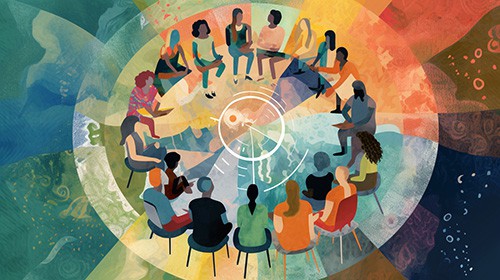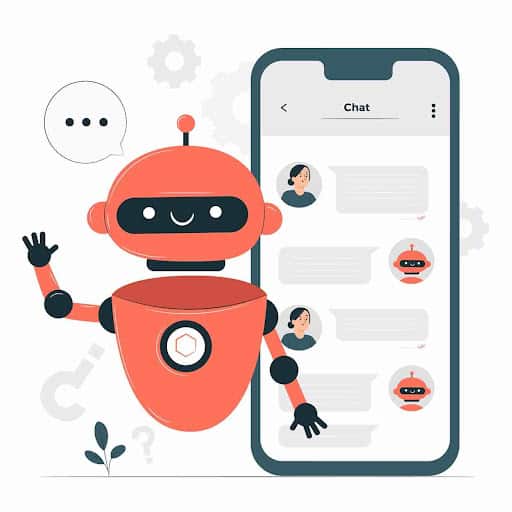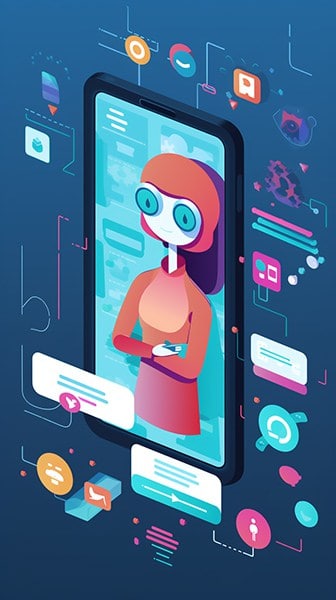
A new generation of chatbots uses AI to simulate human-like conversations with users. Chatbots driven by Large Language Models (LLMs) can be integrated into digital mental health interventions (DMHIs). Digital platforms such as online or mobile-based programs, wearable devices, virtual reality, or social media will be designed to prevent, treat, or manage mental health problems.
Mental health is a global challenge affecting millions of people worldwide. It’s estimated that more than one in five adults in the U.S. live with a mental illness, as reported by the National Institute of Mental Health.
Many individuals who need mental health care do not receive it due to barriers, including lack of availability, accessibility, affordability, acceptability, or service quality. The COVID-19 pandemic has exacerbated the mental health crisis, increasing stress, anxiety, depression, and loneliness among many individuals.
In this context, AI chatbots offer a promising solution for improving mental health care delivery and outcomes.
Here’s a deep dive into how chatbots using LLMs can transform therapy.
How chatbots and LLMs can enhance mental healthcare
By using natural language as the primary mode of interaction, chatbots driven by LLMs can provide users with personalized, engaging, and convenient support for various mental health needs, such as screening, diagnosis, symptom management, behavior change, and content delivery.
Additionally, the new chatbots can potentially overcome some limitations of traditional face-to-face or web-based interventions, including high costs, low scalability, low adherence, stigma, or privacy concerns.
Nevertheless, AI chatbots face challenges and opportunities for cross-cultural and multilingual adaptation. Mental health is influenced by factors like culture, language, religion, ethnicity, and gender, necessitating the new chatbots to accommodate diverse user needs and preferences from various backgrounds and contexts.
Addressing these considerations requires attention to linguistic complexity, cultural norms and values. Furthermore, chatbots must leverage the latest advances in natural language processing and machine learning techniques to ensure accuracy, reliability, and robustness across different languages and domains.
Current applications and evidence
Symptom management and behavior change in mental health involve AI chatbots helping users cope with mental health problems and improving their well-being by providing evidence-based interventions like cognitive behavioral therapy (CBT), mindfulness, and positive psychology.
Tess is a chatbot that uses natural language processing and machine learning to screen users for depression, anxiety, and post-traumatic stress disorder (PTSD), providing psychoeducation and referrals. GPT-3, a language model that can generate natural language texts based on a given input, has been used to create a mental health assistant chatbot that can provide emotional support to users.
Woebot is a chatbot that delivers CBT for depression and anxiety through daily conversations. Another example is Wysa, an emotionally-intelligent chatbot that uses LLMs to generate empathetic, personalized responses to users’ emotions, offering various self-help tools. Cross-cultural and multilingual adaptation of chatbots and LLMs.
To realize their potential in mental health care, chatbots must be adapted to diverse user needs and preferences across different cultural backgrounds and languages. This necessitates careful consideration of linguistic complexity, cultural norms and values, ethical and legal issues, and more.
Linguistic complexity
Cross-cultural and multilingual adaptation of chatbots requires addressing the linguistic complexity of natural language. They must handle diverse and nuanced natural language expressions across languages and domains. For example, the LLMs behind a chatbot needs to understand and generate various types of language expressions, such as idioms, metaphors, sarcasm, and humor, which may vary across cultures and languages.
Moreover, they must be able to deal with spelling and grammatical errors, slang, abbreviations, emojis, and other informal language elements that users may employ in their messages. They need to adapt to different levels of language proficiency, dialects, and accents among users.
AI Chatbots must leverage the latest advances in natural language processing (NLP) and machine learning (ML) techniques to address these challenges. For example, they can use NLP algorithms such as natural language understanding (NLU), natural language generation (NLG), sentiment analysis, and emotion recognition to enhance comprehension and generation of the natural language across various languages and domains. Additionally, chatbots leveraging LLMs can employ ML algorithms, like supervised learning and reinforcement learning, to learn from user feedback and data, optimizing performance and personalization across different cultures and languages.
Cultural norms and values

Another challenge of cross-cultural and multilingual adaptation of AI chatbots is respecting and accommodating users’ cultural norms and values from different backgrounds and contexts. Various factors, such as culture, language, religion, ethnicity, and gender, influence mental health. Therefore, chatbots and LLMs must adjust their tone, style, politeness, and formality according to the user’s culture and preferences. Moreover, they must be aware of cultural differences in the perception and expression of emotions, mental health problems, coping strategies, help-seeking behaviors, and other related aspects. It’s essential for AI chatbots and LLMs to be sensitive to cultural diversity in beliefs, attitudes, and expectations that users may have regarding AI systems and mental health interventions.
AI Chatbots should involve users and stakeholders from different cultural backgrounds and languages in the design process to address these challenges. For instance, they can conduct user research, co-design workshops, focus groups, interviews, and surveys with users and stakeholders from diverse cultures and languages to ensure relevance, appropriateness, usability, and acceptability. LLM driven Chatbots can incorporate culturally appropriate language, metaphors, idioms, humor, and references into their natural language texts and responses.
Ethical and legal issues
A further challenge in using AI chatbots is the need to adhere to ethical and legal principles and standards that apply to mental health care across different countries and regions. Chatbot creators must ensure the privacy and confidentiality of users’ data, comply with data protection regulations, and consider potential ethical issues, such as biases in the AI systems and the potential for misuse of generated content.
Best practices for cross-cultural and multilingual adaptation

Given the challenges and opportunities of cross-cultural and multilingual adaptation of chatbots and LLMs in mental health care, it is essential to identify and implement best practices and recommendations to enhance their effectiveness, usability, and acceptability for users from diverse backgrounds and contexts. These best practices and recommendations include:
- Conducting user testing and evaluation: Perform user testing and evaluation with users from different cultural backgrounds and languages to assess and optimize AI chatbots’ performance, usability, and acceptability across cultures and languages. This can involve conducting usability tests, user satisfaction surveys, and evaluating the effectiveness of chatbots and LLMs in achieving the desired mental health outcomes.
- Leveraging advanced NLP and ML techniques: Utilize state-of-the-art natural language processing and machine learning techniques to enhance the comprehension and generation of diverse and nuanced natural language expressions across languages and domains.
- Personalizing the user experience: Personalize the user experience by adapting the tone, style, politeness, formality, and content of AI chatbots based on the user’s culture, language, preferences, and mental health needs.
- Ensuring cultural sensitivity: Be aware of and sensitive to cultural differences in the perception and expression of emotions, mental health problems, coping strategies, help-seeking behaviors, beliefs, attitudes, and expectations regarding AI systems and mental health interventions.
- Addressing ethical and legal issues: Comply with ethical and legal principles and standards for mental health care to provide privacy, confidentiality, and data protection. It’s important to be aware of biases and the potential misuse of generated content across different countries and regions.
- Providing clear instructions and support: Offer clear instructions, guidance, and support to users on using chatbots and LLMs, their purpose, limitations, and potential benefits, and the availability of other mental health resources and services.
- Monitoring and continuous improvement: Continuously evaluate the performance, acceptability, and impact of chatbots and LLMs in mental health care across different cultural backgrounds and languages. Use the feedback and data to optimize and improve the chatbots and LLMs, address emerging challenges, and enhance their effectiveness and impact.
Conclusion

The use of AI chatbots in mental health care presents challenges and opportunities. By addressing linguistic complexity, respecting cultural norms and values, adhering to ethical and legal principles, and implementing best practices, chatbots and LLMs can contribute to more inclusive, accessible, and effective mental health care for users from diverse backgrounds and contexts.
- Fear of Stupidity: Effects and Treatments for Stultophobia - February 16, 2024
- Body Scan Chronicles: Our Publisher Breaks Through Chronic Pain With Meditation - January 23, 2024
- VR Meditation App: A Beginner’s Guide to Virtual Reality Meditation - July 13, 2023

